
[256] Phasianus colchicus, Pheasant
Introduction
Phasianus colchicus, the (Common) Pheasant, is a widespread and common gamebird that has been bred for hundreds of years for shooting and is now naturalised and, in places, can be semi-tame.
Other birds in the family Phasianidae are also called Pheasants. There is only one other species of Phasianus, which is sometimes considered as a subspecies of Phasianus colchicus.
In Europe and many countries where it is naturalized Phasianus colchicus is simply called the Pheasant, but in the USA, it may be called the Ring-necked Pheasant. (Not all subspecies have the ring neck.)
Taxonomy
Kingdom – Animals
Phylum – Chordates
Class – Aves (Birds)
Order – Galliformes (Gamebirds)
Family – Phasianidae (Pheasants, Partridges, Junglefowl, Turkeys Peafowl and others)
Genus – Phasianus
Scientific Name – Phasianus colchicus
Name
Colchicus relates to Colchis, the Latin name for an area to the East of the Black Sea now in Georgia. Similarly, Phasianus relates to Phasis the ancient name of the main river of western Georgia, now called the Rioni. Both must have been places that someone once associated with this bird for some reason.
Pheasant is cognate with Phasianus.
Description
We have met other gamebirds such as [015] Partridges and [253] the Peacock.
The Pheasant is the most widespread and ancient of our introduced gamebirds. In Britain and in many other countries large numbers are commercially bred each year to be shot.
They are large birds and when disturbed in the countryside they may attempt to run away rather than fly. They can fly short distances and sometimes fly up into trees.
Phasianus colchicus is sexually dimorphic and, as with most birds, the male is the more colourful. He has to show off his looks to attract females. Most of his body is a spectacular mottled brown pattern – a mixture of dark brown, light brown, cream and golden orange (sometimes with some coppery red tones.) His long, tapering tail is light brown coloured and longer than the rest of his body.
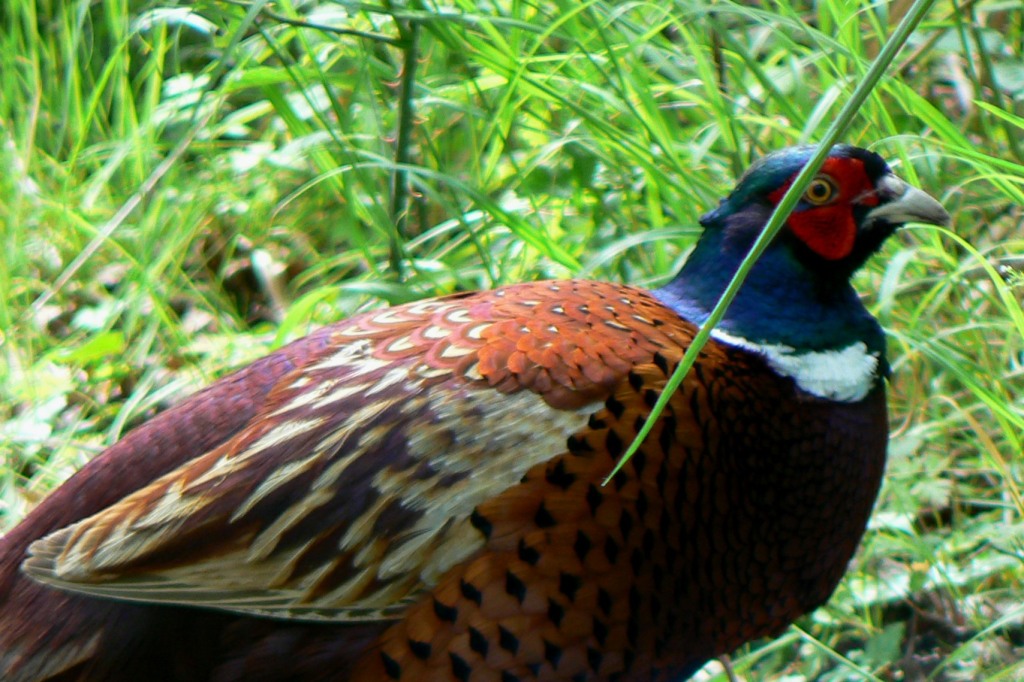
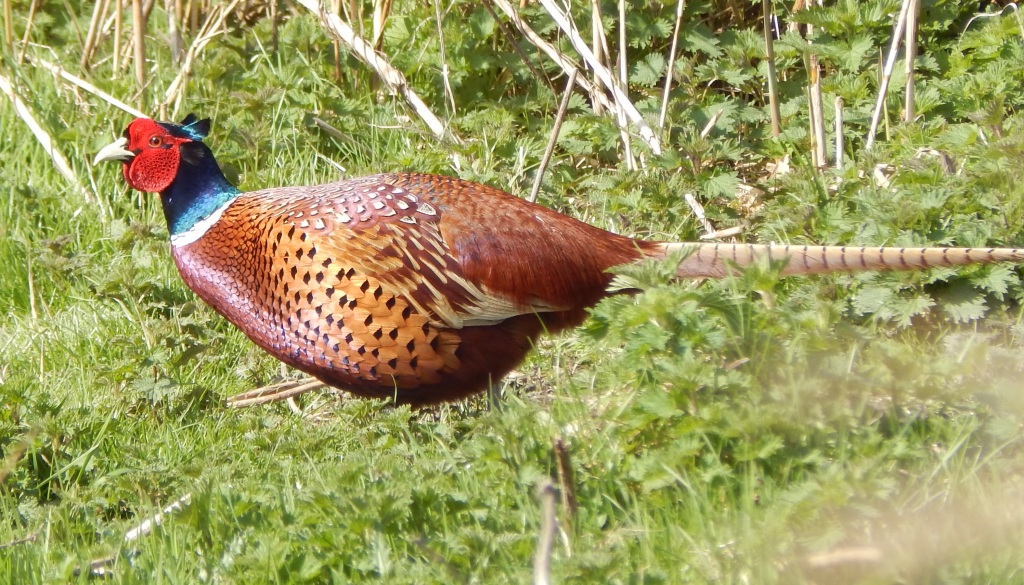
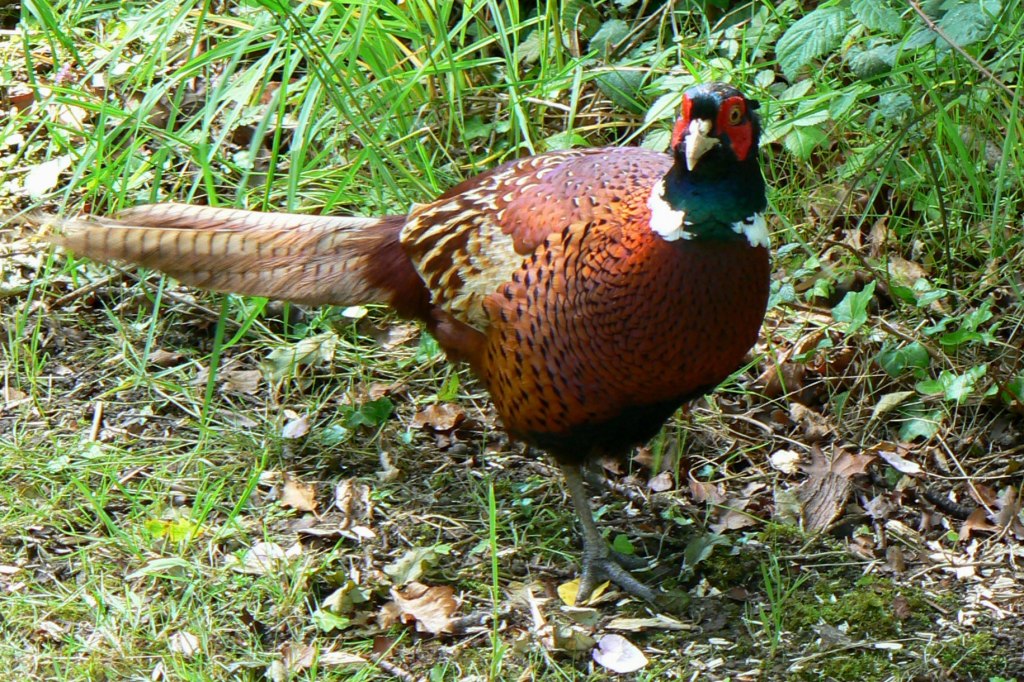
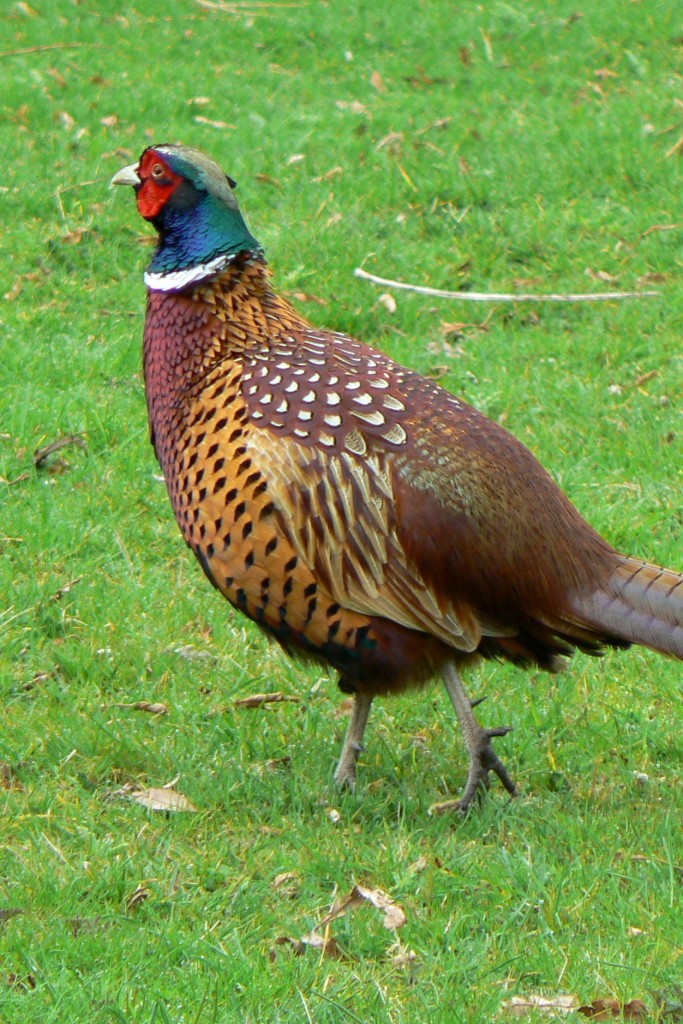
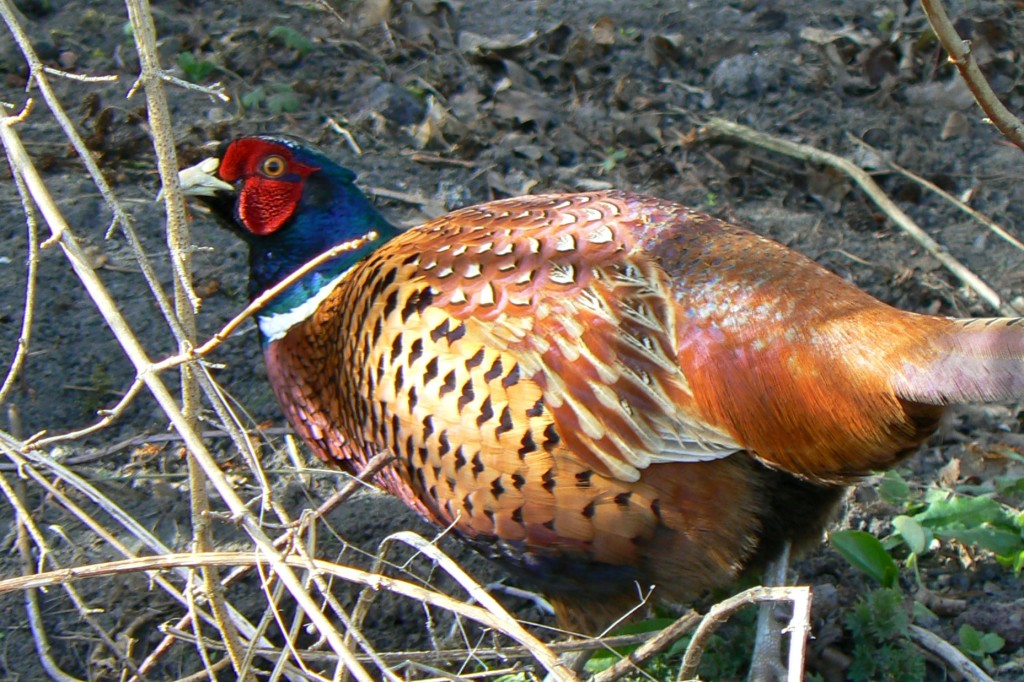
His head is even more colourful, bright blue or blue-green with white bill and neck rim and bright red cheek flaps.


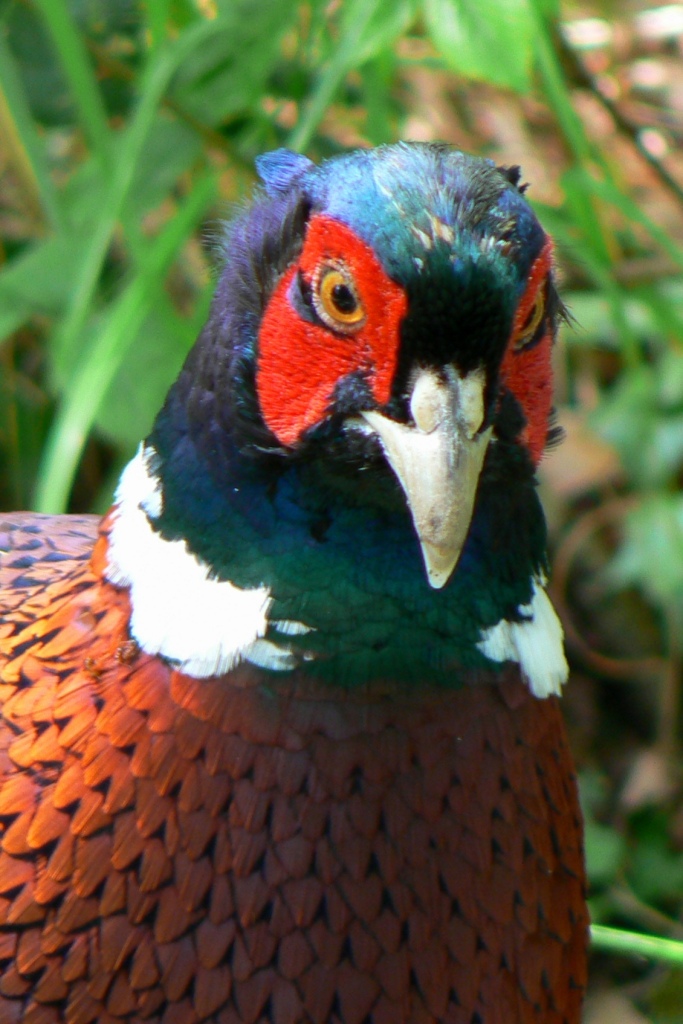
Female birds (and juveniles of both sexes) are a similar shape but smaller and duller mottled brown all over without the colourful heads.
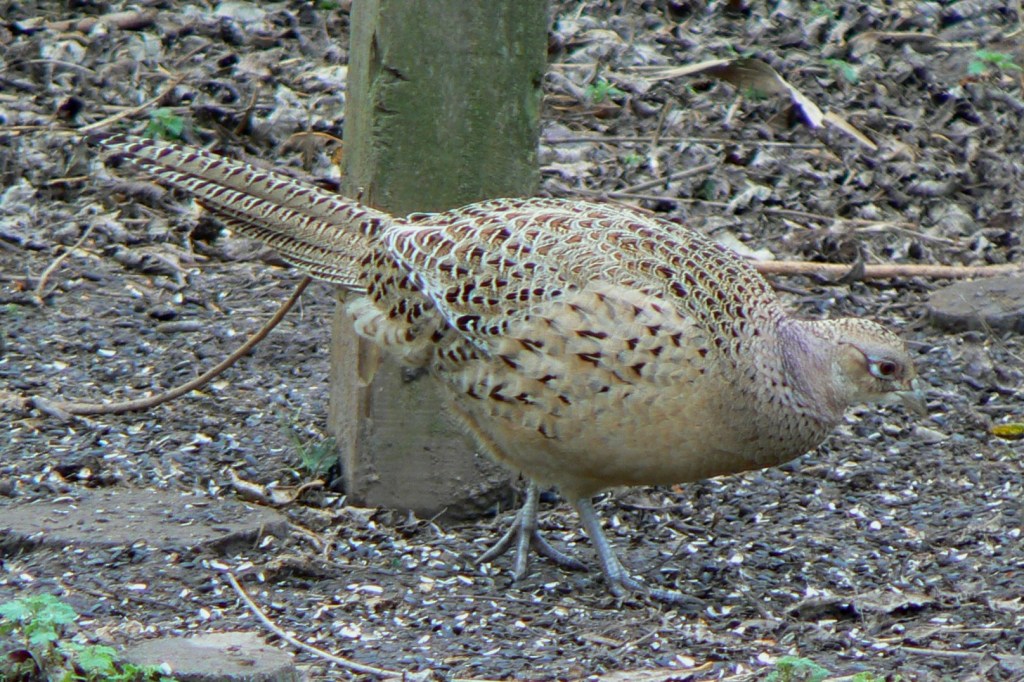



(There are several subspecies with different colour variations. The description above applies to the birds normally seen in the UK.)
Habitat and use
It is estimated that about 50 million Pheasants are released each year to be shot and perhaps 5-10 million survive in the off-season. There may be a small sustaining population of wild birds but their numbers are difficult to estimate.
Many Pheasants are kept as show animals and this leads to many colour variations with hybridization between subspecies (and possibly the other Phasianus species.)
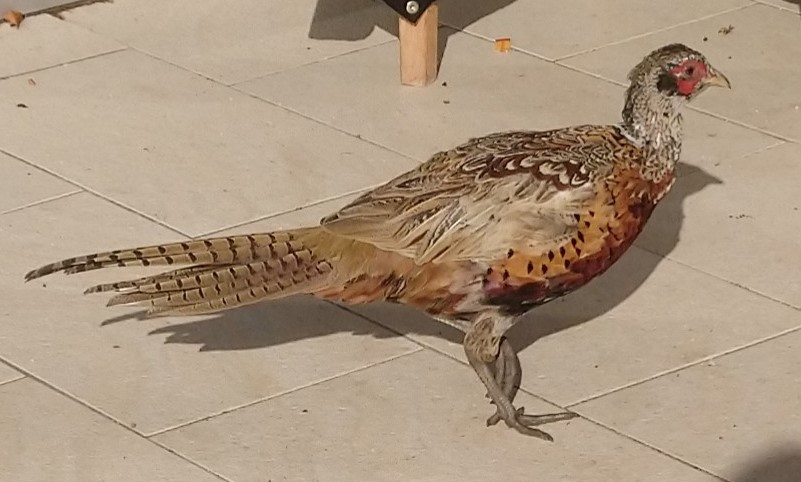
Other Notes
You can often see Pheasants in the countryside or when driving down country roads but it is impossible to determine whether they are recently released or wild. While those that have been hunted mat be averse to humans, some become familiar enough to come to country areas where there are bird feeders.
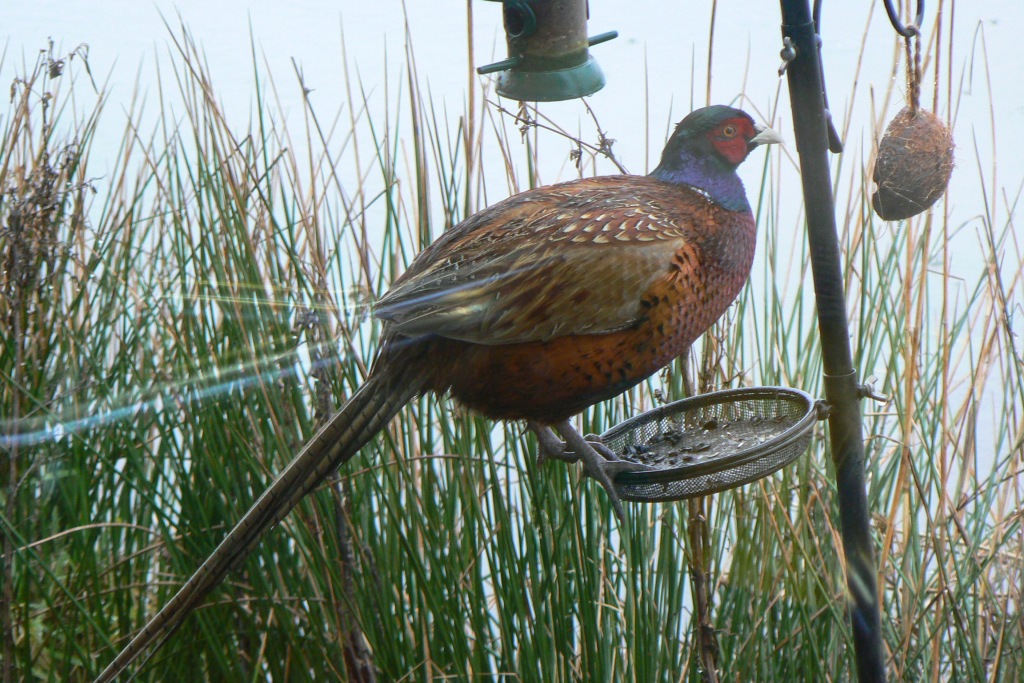
See also
Gallus gallus, the Red Junglefowl, is a related bird in the order Galliformes – perhaps best known for its domesticated version, the Chicken. Approximately fifty thousand million of these are bred every year.
